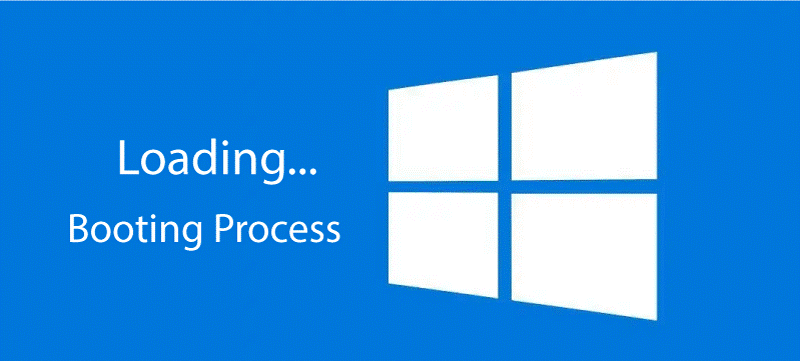Booting Process in Operating System
What is Booting?
Booting is defined as the term which says that the process of loading the operating system into the memory. The process of booting begins when we switch on the computer and carry on until it is ready for use. In case of DOS also known as disk operating system, the booting procedure begins when we switch on the computer until the DOS prompt is displayed. It mainly deals with 3 main file system of DOS into memory. These files are IO.SYS, MSDOS.SYS and .COMMAND.COM.

Operating system generally performs all the basic processes such as managing files, processes and memory. Thus the operating system plays the role of manager of all the resources. That’s why the operating system is also known as the interface between the user and the hardware.
There are mainly 5 types of operating systems:
- Batch operating system: This is a kind of operating system which interacts with the computer. The idle time of batch operating system is very less. It easily manages huge work on batch.
- Time sharing operating system: In this type of operating system, every task is assigned with some amount of time to execute.
- Distributed operating system: In this type of operating system, user can access the files as well as software which are not included in his system. In this OS, system delay in data processing reduces.
- Network operating system: This type of operating system executes on a server and issues the capability of managing data and networking functions.
- Real time operating system: This type of operating system is designed for real time activities. For example, life saving activities such as automatic airbags in automobiles for safety purpose in case of extreme accident.
During the booting process of DOS, the following steps are implemented when we switch on the computer:
- When the system is switched on, BIOS (Basic Input/Output System) implements a series of activities or performance test on programs stored in ROM, called on power on self test (POST) that examine to know whether the peripherals in the system are in perfect order or not.
- After the BIOS is performed with pre boot activities and performance test, it reads bootable sequence from CMOS (Common Metal Oxide Semiconductor) and search for the master boot record in initial physical sector of the bootable disk as per boot service sequence described in CMOS.
For example, the boot device sequence
Floppy disk
Hard disk
CDROM - In the next stage, the master boot record will be explored first in a floppy disk drive. If not found then the hard disk will be explored for master boot record. But if the master boot is also not present in the hard disk, we have to search in the CDROM drive. After that if the master boot is not read by any of the mention sources then the ROM displays that “NO BOOT Device Found” and system is discontinued. On uncovering master boot record from as particular bootable drive, OS loader (also known as bootstrap loader) is loaded form boot sector of bootable drive into memory. Bootstrap is type of program which is present in boot sector of bootable device.
- Bootstrap loader first loads the IO.SYS file and MSDOS.SYS file and load it in core file of DOS system.
- MSDOS.SYS explores to find the command interpreter in CONFIG.SYS file and when it is found it loads into the memory. If command interpreter is not present in the CONFIG.SYS file then the command file is loaded as default command interpreter of DOS system.
- AUTOEXEC.BAT is one of the most important file which is loaded in the last. It carries a sequence of DOS commands. In the next step, prompt is displayed, and we can see the bootable device appeared on the computer system. All these 6 methods are most important and explain the booting in DOS system.
Classification of Booting
- Switch booting: When a user switches on the computer system, the operating system is loaded from disk to main memory. This type of booting is known as switch booting. It consumes more time than the hot and warm booting. It is also known as cold booting.
- Warm booting: This type of booting is performed when computer is in a hang state or in a situation in which the computer gives no response. Computer doesn’t respond to commands provided by the users. There are multiple reasons behind the hang state of a computer. It can be fixed by rebooting the device by using restart or reset button on cabinet. You can also follow the shortcut key combination ALT+CTRL+DEL to restart the computer.